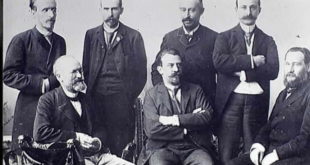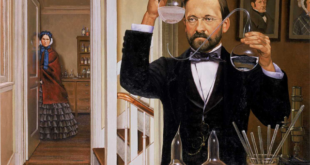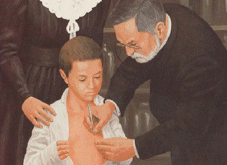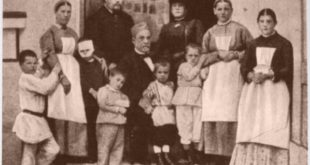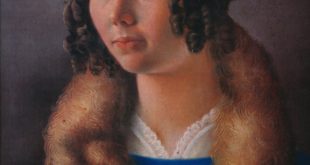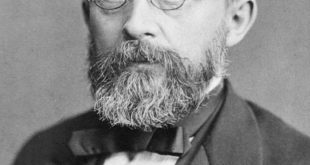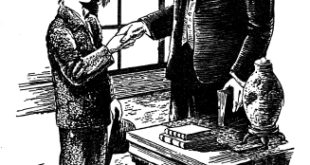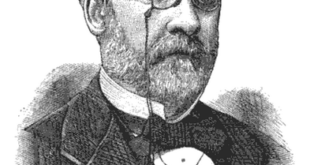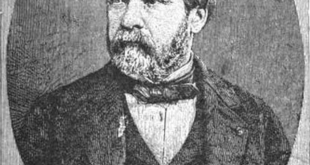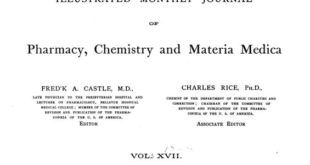Originally published in Auburn Seminary Record, Volume 12, March 10, 1916, No.1 The Organizing , Training and Inspiring of Church Officers Address by Rev. William R. Taylor, D.D., Before the Alumni Conference, May 9, 1916 III. The Inspiring of Church Officers And now abideth organizing, training and inspiring, these three; but the greatest of these is inspiring. For if a …
Read More »Life of Pasteur
Louis Pasteur, the Father of Immunology?
Originally published April 10, 2012 by the US National Library of Medicine INTRODUCTION As a student of immunology, I learned that Louis Pasteur was really the father of immunology, despite Edward Jenner’s pioneering introduction of vaccination to prevent smallpox in 1798 (Smith, 2011). Although successful, Jenner’s experiments led to no understanding as to how immunity develops. By comparison, in addition …
Read More »Historical Perspectives A Centennial Celebration: Pasteur and the Modern Era of Immunization
Originally published on July 5, 1985 by the Centers for Disease Control and Prevention On July 6, 1885, Louis Pasteur and his colleagues injected the first of 14 daily doses of rabbit spinal cord suspensions containing progressively inactivated rabies virus into 9-year-old Joseph Meister, who had been severely bitten by a rabid dog 2 days before. This was the beginning …
Read More »Pasteur: High Priest of Microbiology
Wherever he turned, Pasteur brought great insight to benefit humanity Robert I. Krasner, 1995 This year marks the centennial of Louis Pasteur’s death, occasioning a series of events organized by UNESCO and the Pasteur Institute to celebrate his many contributions. When one thinks of the famous names associated with the history of medical science, certainly Pasteur ranks among the greatest. …
Read More »Recent Research on Louis Pasteur’s Connections with the Fine Arts
by Bert Hansen, Ph.D. Professor Emeritus of History Baruch College of CUNY It has long been known that Louis Pasteur (1822-1895) took art lessons as a teenager. About thirty of his drawings, pastels, and lithographs have survived. Most of them are portraits of family, friends, and people in his town. But he stopped this work at age nineteen, and as …
Read More »Virchow and Pasteur
Originally published in The Journal of the American Medical Association, Volume 57, Number 15, 1911, p. 1225 To the Editor: –All those who relish rich and lofty natures, great characters who have marked their impress on a whole generation, and left of their passage a trace that time shall not obliterate, will have read with interest and emotion your editorial …
Read More »Scientists from Around the World take Interest in Pasteur’s Hydrophobia Experiments
Originally published in The American Magazine, Volume 22, July to December 1886, p. 255 The estimation in which the work of Pasteur toward the elucidation and cure of hydrophobia is held by scientific men, is swhon by the fact that learned commissions have been sent to Paris to examine into the methods followed by him. That appointed by the English …
Read More »Pasteur’s Life and Labors
Originally published in The American Magazine, Volume 22, July to December 1886, pp.341-349 Of Pasteur’s life, apart from his work, but little is to be said; for his life is emphatically his work. A normally idle and pleasure-loving childhood passed into an adolescence of rare industry and a maturity of entire self-devotion; and the truant schoolboy developed into a Scientific …
Read More »The Druggist: Louis Pasteur Biography
Article originally posted in The Druggist, Volume 6, 1884, p. 8 Louis Pasteur, the distinguished chemist, whose portrait is this month presented to the readers of The Druggist, was born at Dole, in the Department of Jura, in 1822. He entered the College of Besaucon as an usher at the age of eighteen, and three years later became a pupil …
Read More »Success of Pasteur’s Treatment of Hydrophobia
Originally printed in the American Druggist: A Weekly Illustrated Journal of Practical Pharmacy in September, 1889 At the Academy of Sciences, M. Pasteur recently presented a note of the results observed in the Pasteur Institute from May 1st 1888, to May 1st 1889 (La France Médicale, No. 73). During this period, 1,673 persons bitten by rabid, or presumably (très suspects …
Read More » Pasteur Brewing Louis Pasteur – Science, Health, and Brewing
Pasteur Brewing Louis Pasteur – Science, Health, and Brewing 